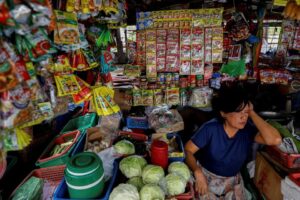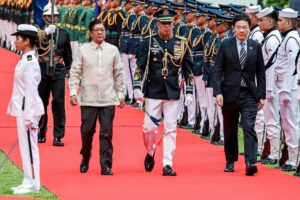
The inflation rate in the Philippines slowed to 3.7% in June, snapping a four-month acceleration streak, due to slower increases in utility and transportation costs, according to the Philippine Statistics Authority (PSA).
At a press conference, National Statistician and PSA Chief Claire Dennis Mapa reported that the inflation rate, which measures the rise in prices of goods and services, dipped slightly from May’s 3.9%. This brings the year-to-date inflation to 3.5%, within the government’s target range of 2% to 4%.
June’s inflation rate also fell within the Bangko Sentral ng Pilipinas’ (BSP) forecast range of 3.4% to 4.2% for the month.
Mapa attributed the easing inflation to slower increases in the Housing, Water, Electricity, Gas, and Other Fuels Index, and the Transport Index.
Key Contributors to Inflation Decline
The Housing, Water, Electricity, Gas, and Other Fuels Index saw a notable reduction, contributing 65.8% to the overall decline in inflation. The utilities index posted a 0.1% inflation rate, down from 0.9% in May, driven by a deflation in electricity costs to -13.6% from -8.5%.
Meralco, the country’s largest power distributor, implemented a P1.9623 per kilowatt-hour reduction in household electricity rates in June due to staggered collection of generation costs, as ordered by the Energy Regulatory Commission.
The Transport Index inflation rate slowed to 3.1% in June from 3.5% in May, contributing 13.9% to the overall downtrend, primarily due to a slower increase in gasoline prices.
Other indices that saw slower inflation rates include:
- Restaurants and Accommodation Services: 5.1% from 5.3%
- Alcoholic Beverages and Tobacco: 3.8% from 4.2%
- Clothing and Footwear: 3.2% from 3.4%
- Furnishings, Household Equipment, and Routine Household Maintenance: 2.8% from 3.1%
- Personal Care and Miscellaneous Goods and Services: 3.2% from 3.4%
Uncertain Future Trends
Despite the decline, Mapa noted that it is unclear if this trend will continue for the rest of 2024, particularly as food inflation rose to 6.5% in June from 6.1% in May. The increase in food prices was driven by higher costs for vegetables, meat, and pork, affected by the rainy season and the rise in African swine fever cases.
Government Commitment
National Economic and Development Authority (NEDA) Secretary Arsenio Balisacan emphasized the government’s commitment to maintaining inflation within the target range. He highlighted the importance of strengthening the energy sector and ensuring a sufficient and affordable food supply.
Regional Inflation
Inflation in Metro Manila eased to 2.3% in June from 3.1% in May, while areas outside the National Capital Region maintained a 4.1% rate. The Bangsamoro Autonomous Region in Muslim Mindanao registered the highest inflation at 5.3%, while Region I (Ilocos Region) had the lowest at 2.8%.
Outlook
The BSP noted that risks to the inflation outlook have shifted to the downside for 2024 and 2025, due to lower import tariffs on rice under Executive Order 62. However, higher prices of other food items, transport charges, and electricity rates remain potential risks.
The BSP will continue to ensure that monetary policy supports price stability and sustainable economic growth.






















Comments are closed for this article!